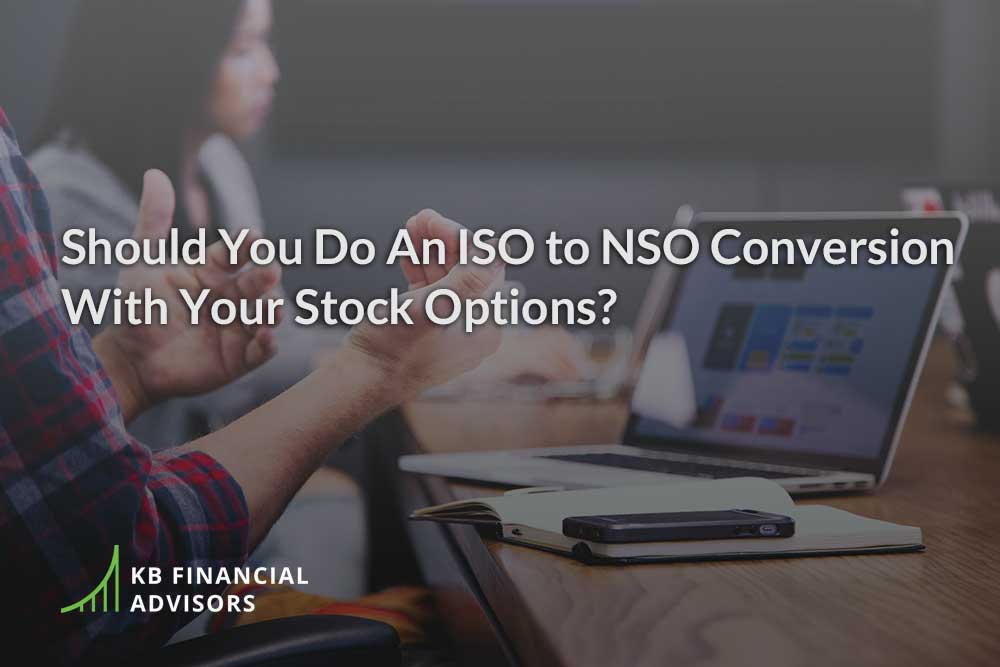Deciding when to exercise stock options in your company before it’s sold or has an IPO can be a pretty sticky situation.
For one, you have no idea what’s going to happen in the future: the company could have a successful IPO and you could make millions because you decided to invest now… or the company could go belly-up, and you’ll have lost all your money. Which is no fun. ????
However, indecision can be killer, especially when you’re being ambitious with your finances. You want to make sure you’re making the most of your wealth-building opportunities while you’re working for this company, after all… especially if you don’t work there forever.
So in this article I talk about some factors that can help you decide what to do and when to do it… along with the three best times to exercise stock options if you know you want to.
When to Exercise Stock Options: Understand the Cost + Risk of Timing
Risk, and especially the risk around cost, is the major thing that puts most tech employees in the place of indecision around when to exercise stock options in the first place.
Of course, there’s always the risk of the company going bankrupt and losing their money… as well as the direct risk of the money you have to give up now to buy those stock options. But there are also some indirect risks, most of which boil down to cost.
Understanding the Immediate Cost of Exercising Stock Options
The fixed cost of exercising, or how much you have to spend in order to exercise your stock options now, is pretty easy to calculate.
Just take the number of stocks you want to buy, and multiply it by your price per stock. That’s the amount that you have to pay out of pocket right now, and that you may never get back if something goes wrong with the company.
Figuring Out Your Long-Term Cost of Exercising Stock Options
But then there are variable costs to consider, and this is where things get a little hairy.
For example: your taxes.
If you exercise NQSOs (non-qualified stock options), for example, and the cost you exercise at is lower than the cost of the fair market value of each share, then the difference will be taxed as ordinary income. And if we lived in a perfect world, all you’d have to do is figure up that difference based on your income’s tax bracket.
But since so many tech employees take home so many other types of supplemental wages, you may not know which tax bracket you’ll land in come April, and you could end up owing a lot more than you planned.
To make matters even more complicated, the taxes you pay on exercised stock options depends on the type of stock options you buy.
Like stated above, exercising NQSOs means you have to pay tax on the difference of your exercise cost and the fair market value on the day of your purchase.
(For this reason, it’s probably not best to buy & hold NQSO options, because your tax bill will be through the roof. Instead, it’s better to focus on leverage… so don’t exercise/hold and then wait to exercise/sell them at a good price. If you want more help with this strategy, get in touch with one of our advisors & we’ll be glad to talk to you.)
But if you exercise your Incentive Stock Options, on the other hand, you won’t owe any tax the moment you exercise, but you could trigger the Alternative Minimum Tax, which is another headache. Fortunately, we’ve written a lot about this tax in the past, so you can read more here:
- How Incentive Tax Options and the Alternative Minimum Tax Work
- Incentive Stock Options, AMT, and Cost Basis: What You Need to Know
- How Does the Minimum Tax Credit Work? (An Easy-Follow Guide on MTC + Incentive Stock Options)
Get the Most Out of Your Stock Options… Whether You Exercise or Not
The most important thing though, and the ENTIRE point of this article, is to make sure you get the most out of your stock options, whether you choose to exercise or not.
So beyond just considering risk, cost, and tax cost… it’s crucial to think about the types of return on investment you can get by exercising your stock options. After all, isn’t building your wealth the reason you’re here?
One is in leverage… and the other one, believe it or not, is in taxes.
Leverage as a Source of Return
The simple definition of leverage is this: your cost to exercise your options is fixed, but the share price of your company is variable.
So let’s say you work for a company for ten years. The entire ten years you work there, you’re able to buy stock options at the exact same price, no matter how high the fair market value goes.
So, in theory, the fair market value could be 10x your buy-in price, so exercising your stock options and then selling them means an immediate, clear-cut profit.
Taxes as a Source of Return
And while taxes are a cost risk to consider, they can actually be a source of return too.
They become a source of return, though, only when they’re taxed as long-term capital gain instead of ordinary income… meaning you exercise and hold the stocks for at least a year before selling.
If you’re in the highest income tax bracket, and you exercise and sell immediately, that gain is taxed at 37% because it’s taxed as ordinary income.
BUT, if you exercise your options and wait at least a year to sell, they’re taxed as long-term capital gains, and the highest tax bracket on this type of income is just 20%. Add in the net investment income tax of 3.8%, and that’s a maximum of 23.8% tax, which is a difference of 13.2%.
I know I’m throwing a lot of percentages at you, but let’s talk about what that looks like in real life:
If you had a $1 million stock option income, that’s a savings of $132,000 in taxes, just because you waited to cross that 12-month mark before selling.
Pretty significant, isn’t it?
(Note: While this is an important consideration to make, selling at a good price should always be your first and foremost consideration. After all, there’s nothing worse than waiting to sell to get the tax benefit… only to have the value of the stocks fall. Make sure you calculate your break-even price before you wait on crossing the 12-month mark to make sure the long-term capital gain approach is right for you. Again, if you need help figuring this out, one of our advisors would be happy to talk to you.)
3 Best Times to Exercise in a Private Company
So rather than just saying all the stuff above to confuse you, I’ll give you three “rules of thumb” when it’s a good idea to exercise your stock options in a private company that hasn’t sold, or a startup that hasn’t IPO’d yet.
1. Anytime the Exercise Price & Fair Market Value are the Same
When your exercise price and the FMV (fair market value) are the same, you’ll trigger $0 in taxes… because there’s nothing to tax. You technically bought something for the price it costs, and didn’t receive any additional monetary value in return at the immediate time of purchase.
With NQSOs, this means no ordinary income tax, and with ISOs, it means you won’t trigger the AMT.
You’re also creating the largest potential return from taxes, because all future gains will likely be taxed as long-term capital gains, since you’ll probably have to hold onto them for a while until they reach a price you want to sell them at.
This does mean you have a greater cost risk though, since you’re paying the same price as someone without “inside” access to a good deal.
However, if you believe in the company and are certain the FMV will rise, it can really pay off in the long run.
2. Incentive Stock Options: Anytime You Can Avoid the AMT
Since the Tax Cut & Jobs Act passed in 2017, most tech employees won’t have to deal with the AMT unless they decide to exercise incentive stock options (or ISO).
Because of this, you’ll more than likely be able to exercise a certain amount of ISOs before you reach the threshold of having to pay the AMT.
So if you missed the opportunity or couldn’t exercise early and file an 83(b), it’s still a good idea to exercise this type of option sooner rather than later. Reason being: when the acquisition or IPO happens, you could have a lot of cash coming your way.
Plus, as the FMV goes up, the number of ISO you can exercise while avoiding the AMT goes down, so the sooner the better.
3. Incentive Stock Options: Right Before the IPO
If you know an IPO is likely to happen this year, now is the perfect time to exercise private stock options.
For one, the IPO provides you with a set opportunity to sell your stocks and make money from them.
Two, you can exercise in January, and know you’ll be able to sell the following year to be able to cover the taxes.
Plus, if an IPO is about to happen, you’ve probably already vested some restricted stock units, and the income from this could lower the AMT cost of exercising your ISOs.
Exercise When the Risk is Low & The (Potential) Reward is Good
Anytime you exercise stock options, you’re taking a risk. You’re putting money into something that may or may not pay you back. However, with so many successful IPOs happening in the tech industry, and with tech companies continuing to release programs, software, and products that make the world a better place, the odds may very well be in your favor to exercise.
But, like anything else in your financial life, it’s good to go in with a plan that has your costs covered for your immediate cost, and your long-term fees and costs as well.
Get in touch to speak with one of our advisors on creating a stock options exercise plan that makes sense for you.






